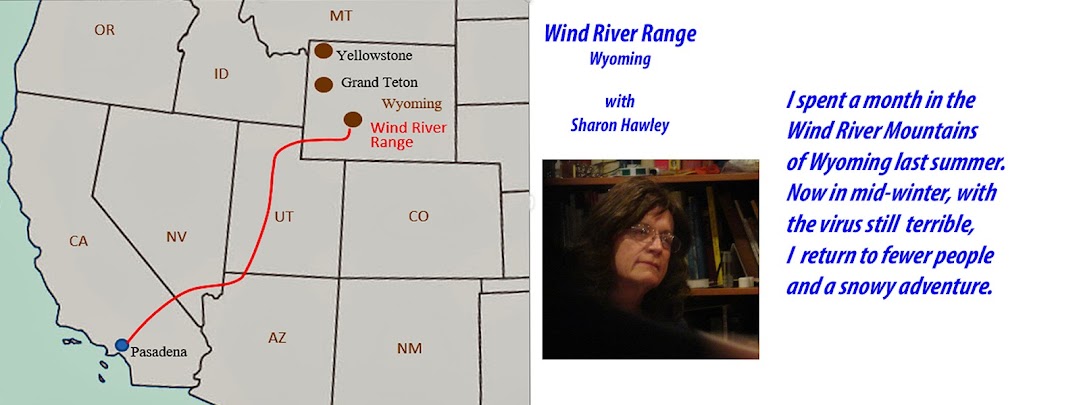Leaving Traces
tracks in the snow
words in a story
language of what I have been
reflection of me
my story
The good thing about it was that after a couple of hours of
shoveling, a car came up behind me. I heard
it coming, and then saw it get stuck half a mile back down the road. I walked back, and they walked up. We
met between our disable transportations.
We agreed that without cell phone service and the unlikely event of
anyone coming before dark, we had better work together. We pushed, shoveled, and broke off small
branches to put under our tires. In
about two hours both vehicles were free and moving very slowly back down the
road. Only as we approached the better
road did a tow truck come, based on a cell phone call where I could not hear
anyone on the other end. It was our
cooperation that saved us; neither could have got pout alone.
Some places, a cornice had been driven up and over a hilltop by
the wind. Anyone coming up the other
side of it would not know that the edge is really an overhang of soft snow, and
falling into a heap of snow, or worse into an avalanche is very likely.
The snow that builds up to make cornices is driven by wind
from other places where rabbits can still dig through it to find food. This one did not run away even stop its
munching, apparently knowing that I was no threat.
 |
Other places, the snow is undisturbed by wind, lying smooth as a new canvas, where a tree paints a self-portrait.
From Pinedale, Wyoming, I drove west, stopping for the nights
at places shown on a map that Michael Angerman has prepared. See them at: Google Map for Winter 2021
You can also see the map for the summer trip of 2020 at: Michael's Map
 |
Rising above Western Idaho’s high plain of lava, |
My intention was to drive from Bend, Oregon, to Corvallis today,
but a severe winter storm has caused me to wait it out. This is how it looked in Bend this
morning. The twisty road over the Cascades
is much worse.
I wish to thank all of you who have read and followed this
blog, and especially those who left comments.
I hope that a time not too far away will allow the in-person gatherings
we once enjoyed. In the mean time,
adventure as you can, however you can.























































